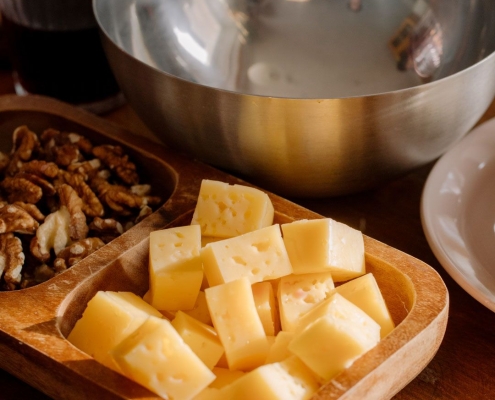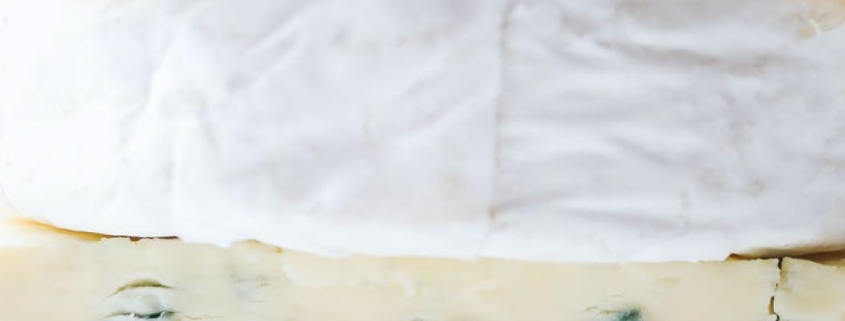Healthiest Types of Cheese

Cheese is a dairy product with hundreds of different textures and flavors. It is produced by adding acid or bacteria to the milk of various farm animals, and then aging or processing the solid part of the milk. The nutrition and taste of cheese depend on how the cheese is produced and the milk used. Some people worry that cheese is high in fat, sodium and calories. However, cheese is also an excellent source of protein, calcium and several other nutrients.
1. Mozzarella
Mozzarella cheese, usually made from milk or Italian buffalo milk. Although aged cheese has its own set of benefits, fresh cheeses with high moisture content (such as mozzarella) usually have the added benefit of lower sodium content. Mozzarella cheese also contains about 15% of the recommended daily intake (RDA) of calcium in one serving. Mozzarella is a soft cheese that’s lower in sodium and calories than most other cheeses. It also contains probiotics that may boost your immune system.
- Calories: 85
- Protein: 6 grams
- Fat: 6 grams
- Carbs: 1 gram
- Sodium: 176 mg — 7% of the Reference Daily Intake (RDI)
- Calcium: 14% of the RDI

2. Blue Cheese
Blue cheese is made from cow, goat, or sheep’s milk that has been cured with cultures from the mold Penicillium. It is typically white with blue or grey veins and spots. The mold used to create blue cheese gives it a distinctive odor and bold, tangy flavor. Blue cheese is very nutritious and boasts more calcium than most other cheeses. Compared to other cheeses, blue cheese (particularly the Stilton variety) has even higher levels of vitamin K2 than cheddar. Vitamin K2 is the vitamin that helps keep calcium from building up in soft tissues surrounding the heart so it can be used to build strong bones and power other bodily processes.
- Calories: 100
- Protein: 6 grams
- Fat: 8 grams
- Carbs: 1 gram
- Sodium: 380 mg — 16% of the RDI
- Calcium: 33% of the RDI

3. Feta
Feta is a soft, salty, white cheese originally from Greece. It’s typically made from sheep’s or goat’s milk. Sheep’s milk gives feta a tangy and sharp taste, while goat’s feta is milder. Since feta is packaged in brine to preserve freshness, it can be high in sodium. However, Feta is a Greek cheese that’s higher in salt but lower in calories than other cheeses. Feta, like all full-fat dairy, provides conjugated linoleic acid (CLA), which is associated with reduced body fat and improved body composition.
- Calories: 80
- Protein: 6 grams
- Fat: 5 grams
- Carbs: 1 gram
- Sodium: 370 mg — 16% of the RDI
- Calcium: 10% of the RDI
.
4. Cottage Cheese
Cottage cheese is a soft, white cheese made from the loose curds of cow’s milk. It’s thought to have originated in the United States. Compared with other cheeses, the protein content is higher, while the calories are kept low. Since cottage cheese is high in protein but low in calories, it is often recommended for weight loss. Cottage cheese is an ideal choice for adding meals and snacks. Cottage cheese also contains selenium, which is an important antioxidant that helps reduce the risk of chronic inflammation
- Calories: 120
- Protein: 12 grams
- Fat: 7 grams
- Carbs: 3 grams
- Sodium: 500 mg — 21% of the RDI
- Calcium: 10% of the RDI
5. Ricotta
Ricotta is an Italian cheese made from the watery parts of cow, goat, sheep, or Italian water buffalo milk that are left over from making other cheeses. Ricotta has a creamy texture and is often described as a lighter version of cottage cheese. Ricotta cheese contains mostly whey protein, which contains all of the essential amino acids. Whey protein has often been noted for promoting muscle growth and may aid in weight management as well as heart health. Whey is easily absorbed and may promote muscle growth, help lower blood pressure, and reduce high cholesterol levels.
- Calories: 180
- Protein: 12 grams
- Fat: 12 grams
- Carbs: 8 grams
- Sodium: 300 mg — 13% of the RDI
- Calcium: 20% of the RDI

6. Parmesan
Parmesan packed with nutrients, especially calcium and phosphorus, both of which are important for bone health. Parmesan is a hard, aged cheese that has a gritty texture and a salty, nutty flavour. It’s made from raw, unpasteurized cow’s milk that’s aged for at least 12 months to kill harmful bacteria and produce a complex flavour.
- Calories: 110
- Protein: 10 grams
- Fat: 7 grams
- Carbs: 3 grams
- Sodium: 330 mg — 14% of the RDI
- Calcium: 34% of the RDI

7. Swiss
As the name suggests, Swiss cheese originated in Switzerland. This semi-hard cheese is normally made from cow’s milk and features a mild, nutty taste. It is also higher in Vitamin B12 than most other cheeses, which is crucial for overall cell, muscle, and nerve function. Its signature holes are formed by bacteria that release gases during the fermentation process. Since it is lower in sodium and fat than most other cheeses, Swiss cheese is often recommended for anyone who needs to monitor their salt or fat intake, such as people with high blood pressure
- Calories: 111
- Protein: 8 grams
- Fat: 9 grams
- Carbs: less than 1 gram
- Sodium: 53 mg — 2% of the RDI
- Calcium: 25% of the RDI
8. Cheddar
Originating in England, and perhaps the most popular cheese on the planet, cheddar cheese is made from cow’s milk. The taste of cheddar depends on the variety, ranging from mild to extra sharp. Cheddar typically contains a decent amount of vitamin K2 as well, which is essential for keeping calcium out of soft tissues like those surrounding the heart, so it can be used appropriately to build strong bones.
- Calories: 115
- Protein: 7 grams
- Fat: 9 grams
- Carbs: 1 gram
- Sodium: 180 mg — 8% of the RDI
- Calcium: 20% of the RDI



